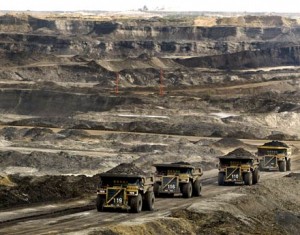Dr. Michael Harbut, Karmanos Cancer Institute
Dr. Kathleen Burns, Sciencecorps
Many people will be exposed to airborne and waterborne chemicals as a result of the BP Gulf of Mexico spill. It is important to understand the potential toxic effects and take appropriate steps to prevent or reduce exposure and harm.
Crude Oil Fact Sheet
Crude oil contains hundreds of chemicals, comprised primarily of hydrogen and carbon (e.g., simple straight chain paraffins, aromatic ring structures, naphthenes), with some sulfur, nitrogen, metal, and oxygen compounds (see Table D-1 in CDC, 1999 linked below). Crude oil composition varies slightly by its source, but its toxic properties are fairly consistent. Chemicals such as benzene and polycyclic aromatic hydrocarbons (PAHs) are very toxic components of crude oil and of high concern. These and other chemicals are volatile, moving from the oil into air. Once airborne, they blow over the ocean for miles, reaching communities far from the oil spill. They can be noticed as petroleum odors. Those working on the spill and people far from it can be exposed to crude oil chemicals in air.
We have prepared 1 page summaries for the public and for workers. You can download and print them.
www.sciencecorps.org/crudeoilhazards-public.pdf
www.sciencecorps.org/crudeoilhazards-workers.pdf
Chemicals being applied to the water, such as dispersants, are also of concern. We don’t have chemical composition details at this time, so can’t provide information on health hazards, beyond noting that most are reported to contain petroleum distillates, which pose health hazards when aspirated. See EPA’s summary of oil spill response products (March 2010): http://www.epa.gov/emergencies/docs/oil/ncp/notebook.pdf
Exposure
Exposure can occur through skin contact, inhalation of contaminated air or soil, and ingestion of contaminated water or food. These can occur simultaneously. Exposure pathways may result in localized toxicity (e.g., irritation of the skin following contact), but most health effects are systemic because ingredients can move throughout the body. Exposure varies based on the duration and concentrations in contaminated media. Differences may result from location, work and personal activities, age, diet, use of protective equipment, and other factors. Concurrent exposure to other toxic chemicals must be considered when evaluating toxic effects. Some chemicals in crude oil are volatile, moving into air easily, and these can often be detectable by smell.
Basic Physiological Effects
Crude oil is a complex mixture of chemicals that have varying abilities to be absorbed into the body through the skin, lungs, and during digestion of food and water. Most components of crude oil enter the bloodstream rapidly when they are inhaled or swallowed. Crude oil contains chemicals that readily penetrate cell walls, damage cell structures, including DNA, and alter the function of the cells and the organs where they are located. Crude oil is toxic, and ingredients can damage every system in the body:
– respiratory
– nervous system, including the brain
– liver
– reproductive/urogenital system
– kidneys
– endocrine system
– circulatory system
– gastrointestinal system
– immune system
– sensory systems
– musculoskeletal system
Read moreGulf of Mexico Oil Spill Health Hazards


